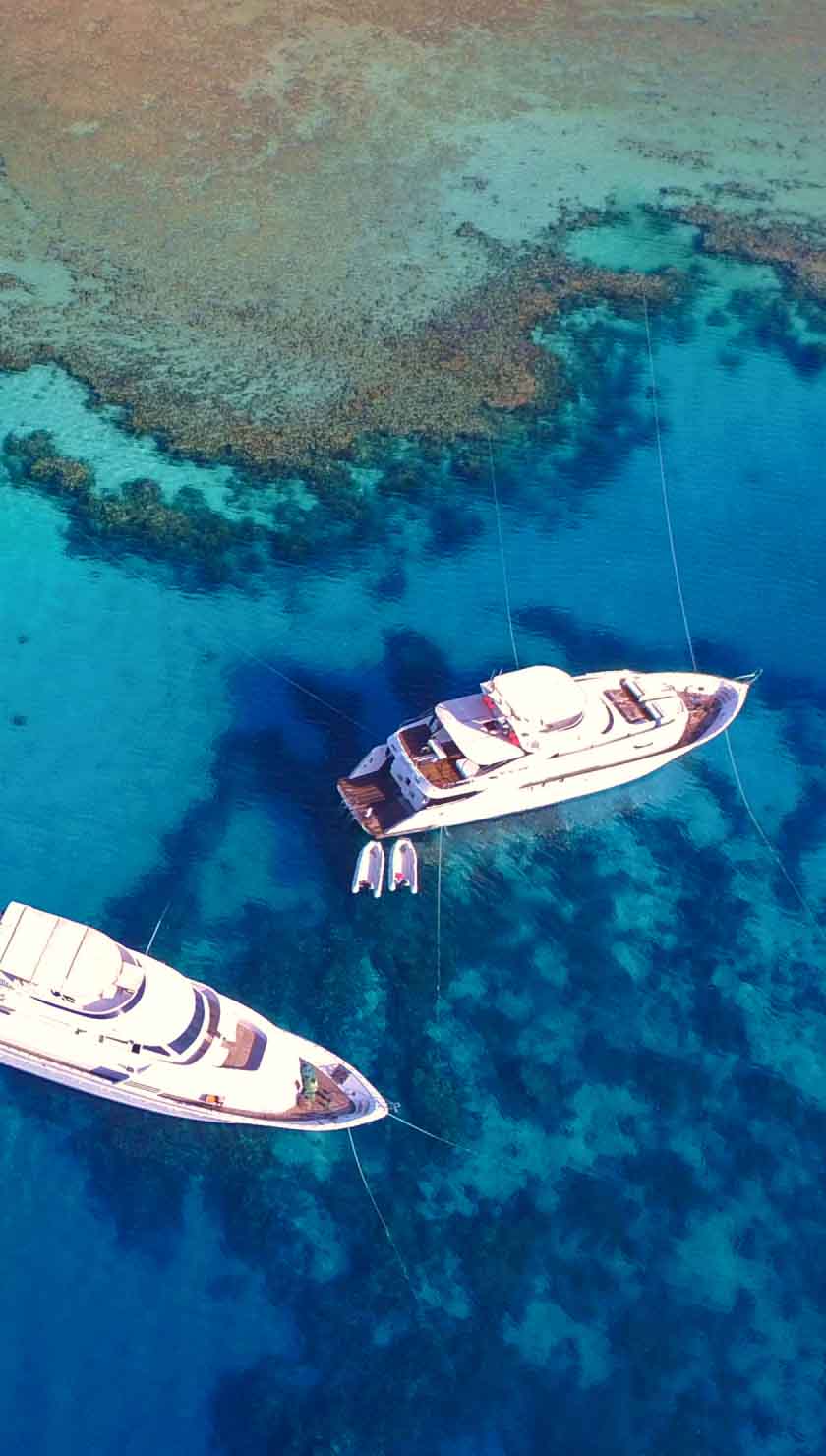Dive Sites and Areas of Cuba
Across the Cuban archipelago, diving is world-class and home to some of the richest waters anywhere. It's possible to reach some spots from the mainland, but the best way to experience the variety of sites on offer is by boarding a liveaboard dive tour and sailing in and around the stunning turquoise lagoons and islands. Liveaboard cruises in Cuba will commonly visit the pristine marine reserves at Jardines de la Reina and the Canarreos Archipelago.
Jardines de la Reina, or 'Gardens of the Queen', is arguably the premier region for not just liveaboard diving in Cuba, but underwater activities in the Caribbean full stop. It consists of around 230 different islets stretching for 150 miles to the south of Cuba. A heavily regulated area, tourist numbers are capped annually to ensure that marine life is preserved and does not suffer damage due to human presence. Some wonderful sites here include Pipin, Farallon, Vicente, Black Coral I and II, and Avalon, where the marine life is magically vibrant and diverse. Many reef sharks, Hammerheads, Turtles, and Eagle Rays are among the frequent visitors.
Consisting of a stunning chain of 350 islets, the Canarreos Archipelago has endless scuba diving, which can be enjoyed via a liveaboard trip heading south from Cuba. Two of the largest islands, Isla de la Juventud and Cayo Largo, are wonderfully unspoiled with picturesque white sandy beaches and clear waters, perfect for night diving where sleeping sharks are commonly sighted. Groupers, Barracuda, Nurse Sharks, and dazzling coral will greet divers at many of the other likely liveaboard sites such as Cienfuegos, Rancho Luna, Cayo Guano Del Este, Cayo Trabuco, Cayo Rosario, and Cayo Sigua. Sailing between these areas in the sunshine aboard a luxury dive boat and on calm waters is a true pleasure.
When To Go
Due to favorable conditions, a tropical climate, and warm waters, diving is possible year-round in Cuba. The visibility is always fabulous (often over 30 meters), with average yearly water temperatures of 25 degrees Celsius. The high season is normally from December to March. Prices may be a touch higher; however, this is arguably the best time for diving. The 'low' season from April through to November still has excellent diving conditions and may be a little cheaper.
Tips for Travellers
The language spoken in Cuba is Spanish, but in the tourism industry, you should be fine with English.
Cuba's currency system is a little strange, yet unique. There are actually 2 forms of currency used in Cuba - the one most likely to be used by tourists and that you'll receive from money exchanges is the Convertible Peso. Bear in mind that outside of Cuba you cannot purchase the Convertible Peso, so it's best to bring some cash (the safest are Euro, Pound Sterling, and Canadian Dollars) and exchange it at the airport 'Cadeca'. US dollars are accepted, but you'll be charged an extortionate exchange fee, so try not to. The other currency is the Cuban Peso, which as a tourist, you are unlikely to need much. Locals use it to pay for day-to-day expenses, such as groceries; it's a good idea to have a small amount in your back pocket if you need to use them for something such as a taxi ride, a small snack, etc.
ATMs can be found in larger cities, but are more scarce elsewhere, where they often do not work. Credit cards are becoming more popular as a means of paying for goods; however, there is still a question mark over whether US-issued cards (including Mastercard) are blocked - it's not worth taking the risk, so the advisable option is to bring enough cash to exchange.
Electrical plugs are the same as the US-style 2-pronged flat pins, with a normal voltage of 110V and AC 60Hz, although some newer hotels use 220V/60Hz. If you are from Europe, make sure you bring the correct adaptor!
How To Get There And Ports Of Departure
There are three main ports from which liveaboard dive boats set sail in Cuba. Dive safaris headed to Jardines De La Reina normally depart from Jucaro Port. Those leaving for the Canarreos Archipelago tend to go from either the ports at Trinidad or Cienfuegos. In reality, most dive tour operators will arrange to pick you up from the capital Havana, so guests will likely not need to make their own arrangements. Havana has a well-served international airport, and commonly flights will come here directly from all over the world, including Europe, Latin America, North America, and Asia. The notable exception is the United States - due to the Cuban Trade Embargo, only a select few charter flights are permitted to fly between the US and Cuba.
Considerations
A wide range of budgets is catered for on LiveAboard.com, from the budget conscious to the complete luxury! Extra costs that may be incurred include National Park Fees, Inscription Fees, and discretionary tips for the crew.
Diving in Cuban waters offers something for everyone, catering to all experience levels. Most liveaboard tours will not request a minimum number of dives - just an open-water qualification. It's advisable to bring your log book and certification card so that the crew is aware of individual divers' comfort.
Normally tourists will require a visa or a tourist card to enter Cuba, and passports need to be valid for the duration of the stay. There are exceptions to this, however, so please check before booking.











